Tashkent airport was chaotic even in the early hours of the morning - not so much because of the volume of passengers who had sleep-walked into the arrivals area, but because of the lack of room for people to queue up resulting in people just milling around, loud back-and-forth exchanges among the airport staff and the sheer time it took to process each arriving passenger.
The immigration official looked intently at the visa we had obtained the previous week in Delhi and stamped our passport without much ado. The Customs check was quite another matter. There is no "green channel" in Tashkent airport and everyone entering the country, citizen and visitor alike, is treated with suspicion. The check is more thorough than any we have seen in our travels so far. The Customs form is long and in addition to declaring 'valuables' like computers, cameras etc. one is required to accurately list all the currencies and amounts that one is bringing into the country (we were to learn why later). A large percentage of bags are manually checked and extended discussions with the official sometimes lead to flaring tempers. With all the waiting involved, it took in excess of an hour and a half from the time we claimed our bags before we made our way out of the airport.
While the Uzbek Som is the preferred currency for daily commerce, there is a thriving black market for the US Dollar with a surprisingly large premium offered compared to the official exchange rate (and consequently what you would get if you just withdraw from the ATM). Offers to 'change money' pop out of the woodwork in the vicinity of large hotels and also around to two main 'bazors' (markets) of Tashkent. The staff in some of the large hotels are also part of this game offering this additional 'service' to their guests.
When planning the Central Asia part of our trip, we decided to fly to Tashkent first purely to take advantage of the relatively cheap Delhi-Tashkent connection on Uzbekistan Airways. We were planning to explore the city for a couple of days before crossing over to Tajikistan and a more thorough visit of Uzbekistan would come later.
Tashkent, the capital of Uzbekistan, is a city of wide tree-lined boulevards with large Soviet style high-rise apartment buildings that quickly give way to quite side streets with independent houses and even quieter alleyways that have houses plastered with mud (think high summer temps) giving it an almost village-like atmosphere! Without exception, independent houses have high compound walls and towering gates, so little can be seen from the streets. The Russian language is still universally understood and street signs are a mix of Uzbek and Russian. Evidence of Soviet legacy is seen everywhere and when juxtaposed with a predominantly muslim population who have not given up their traditional ways (or traditional attire), it certainly makes for an odd mix.
The city metro, while not extensive, is efficient and we relied on it heavily to get around. Security in metro stations is high (evidently several were killed in a bomb blast in 1999) and in addition to running all bags through the scanner, a practice that you come to expect after traveling through SE Asia and India, you are always asked for your 'documents' every single time you enter the station. This is especially strict in the case of foreigners. Since Uzbek officialdom, especially the uniformed kind, has a reputation for giving foreigners a hard time (basically fishing for bribes), we took to carrying photocopies of our passport and visa pages to show, so we could avoid the situation where our actual passport is held hostage, something that has happened to other people!
In addition to being transport hubs, Tashkent metro stations are by themselves a destination that are worth visiting. Due to security reasons, photography is strictly prohibited, which is a shame! Each station has a unique architectural theme and some are lavishly decorated. We sometimes got off at random stations just to admire the decor before getting back on the next train. One station that warrants special mention is the Kosmonavtlar station with its unearthly images of Amir Timur's astronomer grandson and celebrated Soviet cosmonauts like Yuri Gagarin and Svetlana Tereshkova among others. The lighting in the metro stations, while adequate, made for a very surreal nightmarish feeling, as if one were going through to an after-life bureaucratic procedure and one almost expected Gagarin or Tereshkova to ask you to produce your passport for verification before determining whether you were headed to heaven or hell. The deeply grooved dark green columns on the platforms did nothing to soothe nerves already frazzled by this feverish vision. Unlike the more modern metros we had seen on this trip (Tokyo, Fukuoka, Shanghai, Nanjing, Delhi), the passenger cars seemed from another era and the sound effects accompanying the arrivals and departures of the trains only accentuated this other worldly feeling. The seats, however, were comfortably upholstered and everyone inside had a place to sit even during peak hours.
Having just passed through SE Asian and Indian cities, even the main thoroughfare of Tashkent seem deserted in comparison. Traffic seems light even during 'busy' hours and you wondered where everybody was. That is until you hit the 'bozors' which is where everyone comes to get their daily necessities. We visited two of the largest and busiest markets - the Chrosu Bazor and the Olay Bozor, both teeming with people. What we will remember most about them are the abundance of both fresh fruits (apricots, apples, grapes) and dry fruits of every kind imaginable.
We also visited the Old Town where a maze of dirt streets is lined with low mud-brick houses and dotted with mosques and medressas. The Khast Imam complex. the official religious center of the republic includes several beautiful buildings including a library that houses a 7th century Koran (reputed to be the world's oldest) written on deer-skin pages. Due to India's special connection with the Mughal emperor Babar, we made an extra effort to visit the mausoleum of his grandfather Yunus Khan, which is located on the grounds of Tashkent Islamic University. Other sightseeing forays included a trip to Amir Timur Maydoni, where a statue of the gallant Timur on horseback is the central attraction. Nearby Mustaqillik Maydoni (Independence Square) is dominated by a large new Senate building that President Karimov intended to be bigger and grander than the US Senate buildings. The area around has its share of impressive government buildings, museums and embassies all located within a few blocks of each other.
Shashlyk (kebabs of mutton or minced meat) is standard Uzbek fare along with plov (rice with boiled meats, onion, carrots etc), non (bread) baked in a tandoor and shorpa (soups). With limited skill at ordering meatless fare initially, three of the four meals we had consisted of Greek salad and 'non' bread. For a surprising fourth meal at a Georgian restaurant (the Caucus country, not the US state) we were served delicious cream of mushroom soup that we throughly enjoyed, more so because it was a welcome change from salad diet so far!
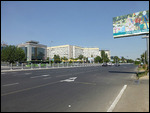
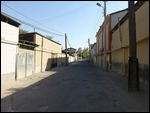
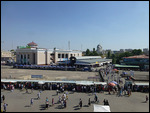



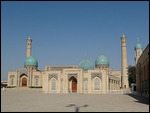

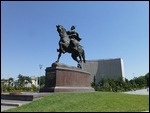
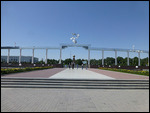
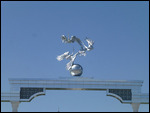
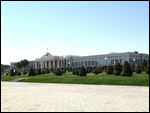
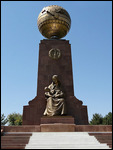
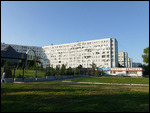
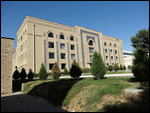
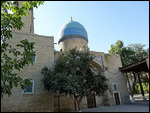
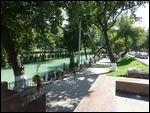
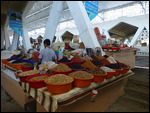
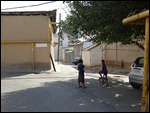

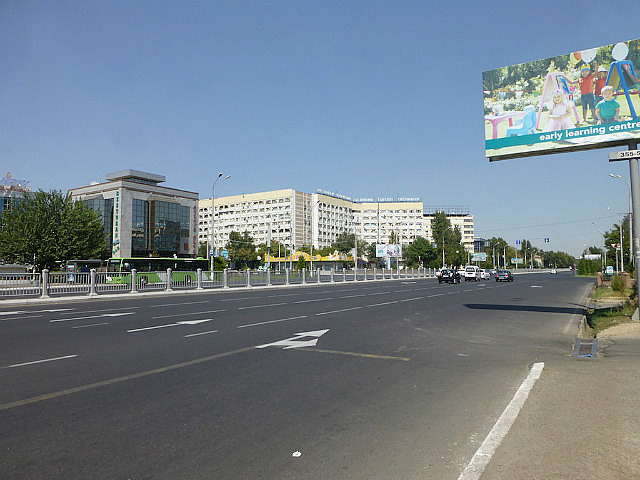
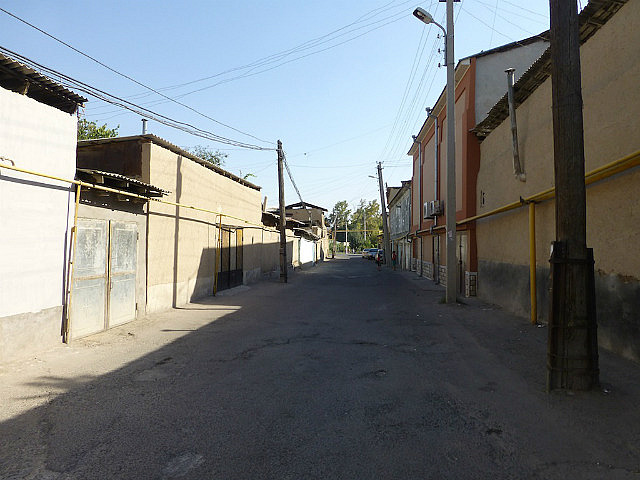
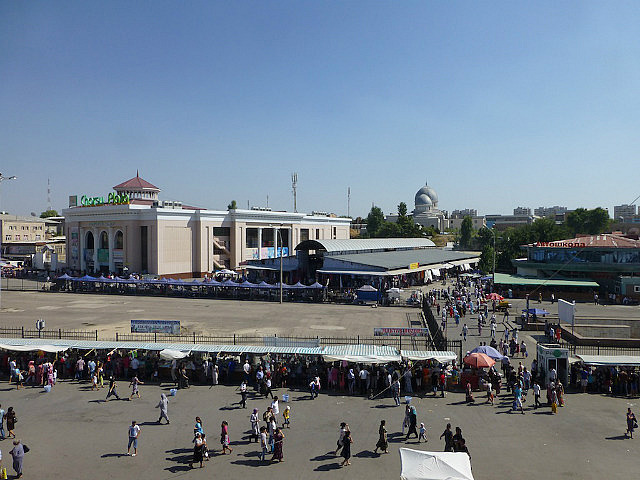
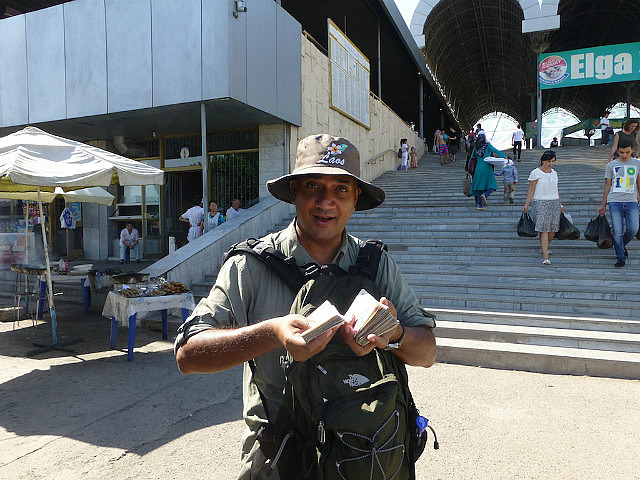
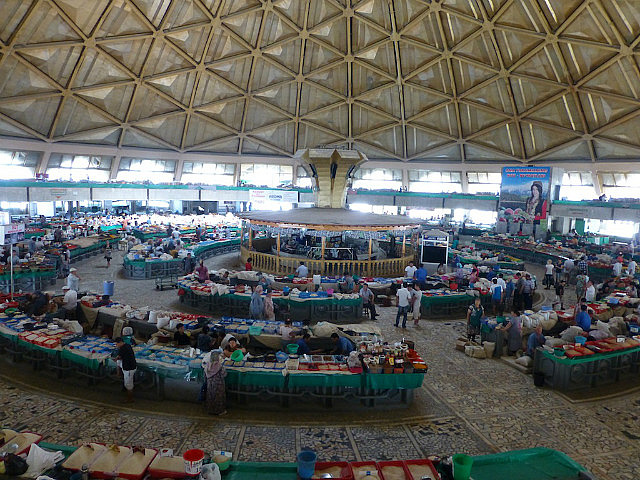
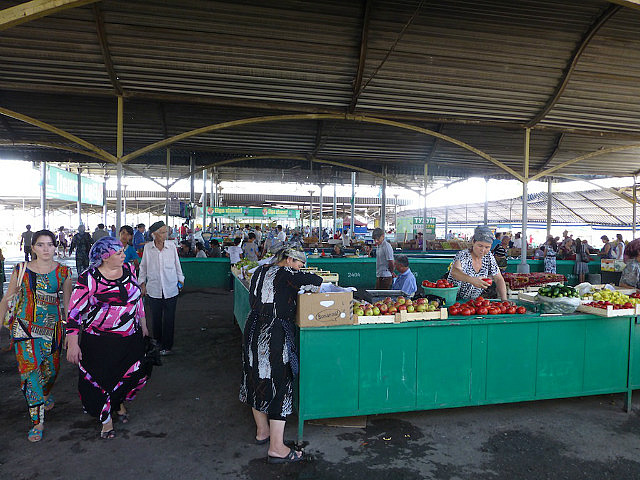
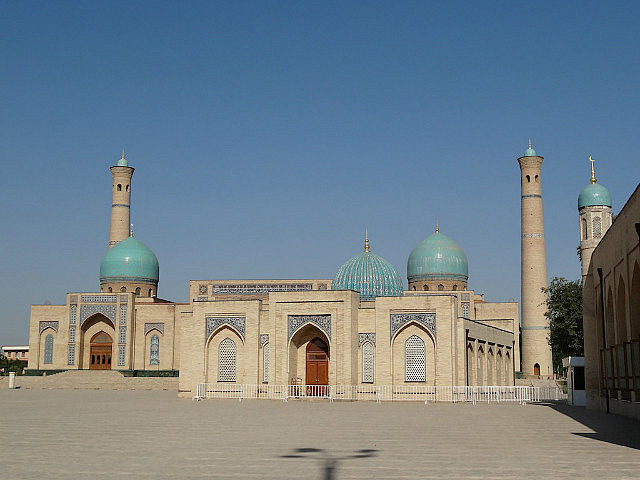
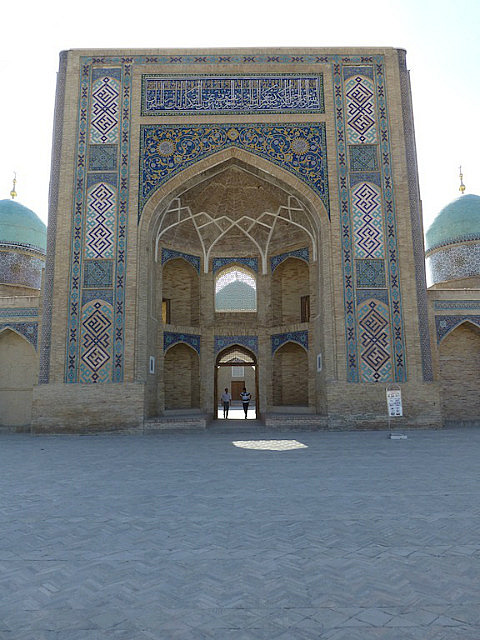
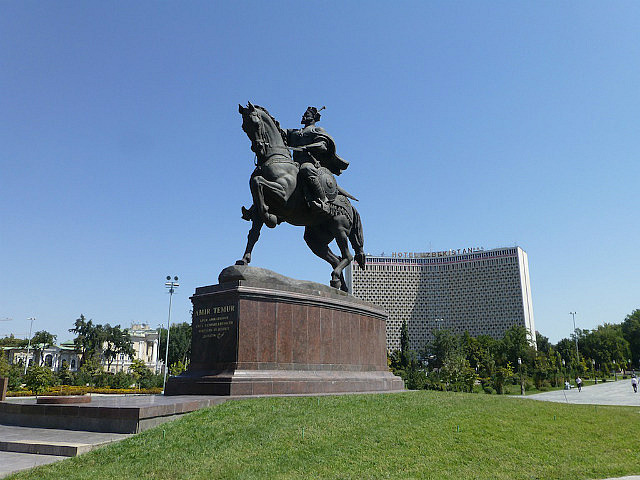

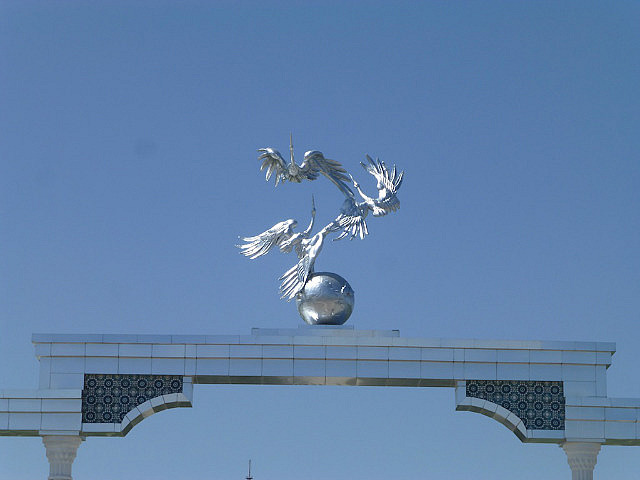
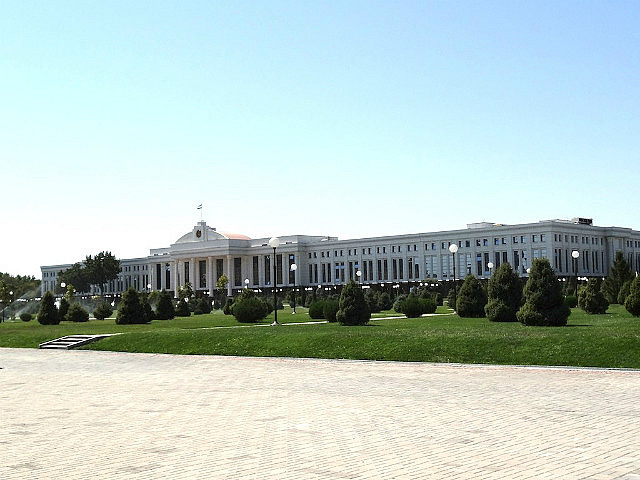
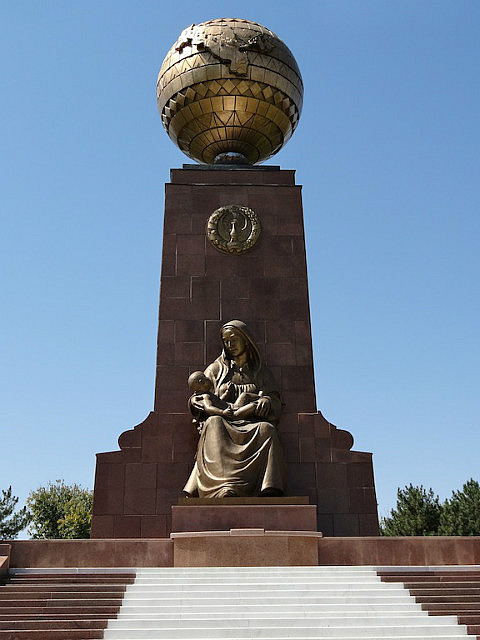
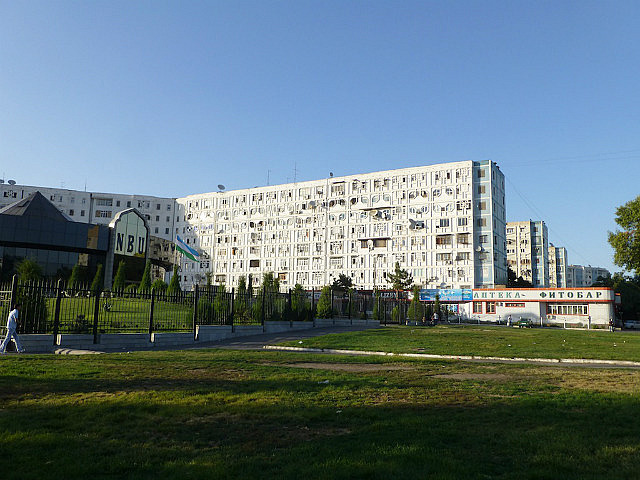


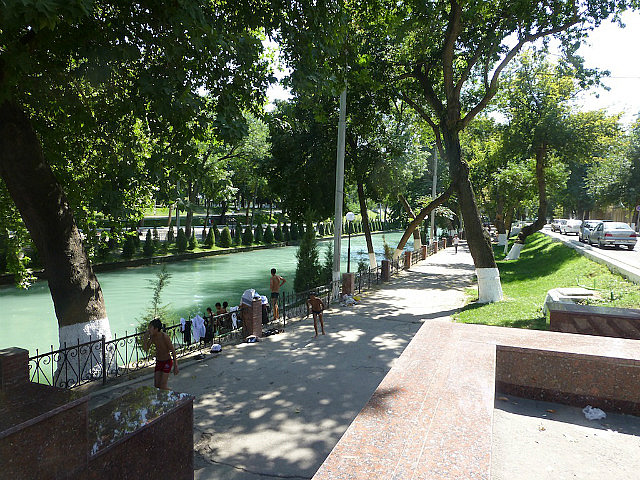
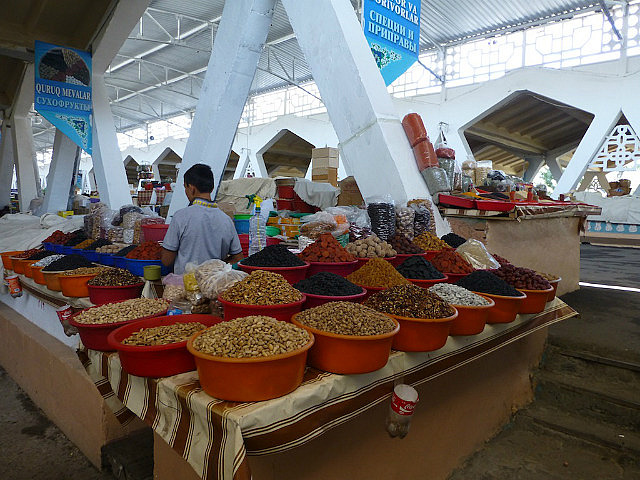
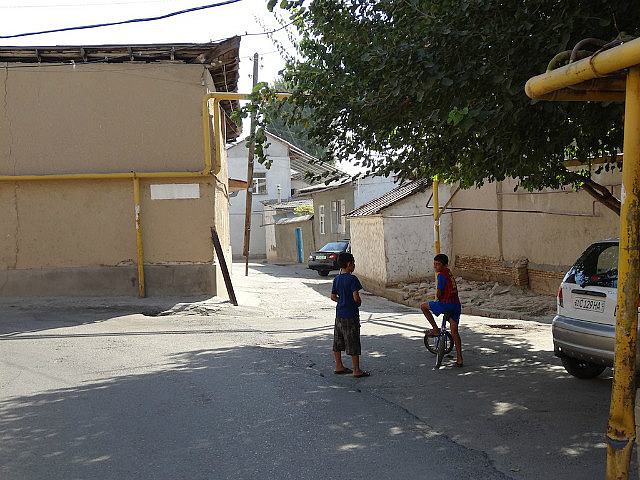

Comments